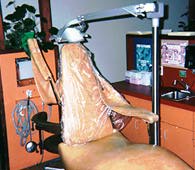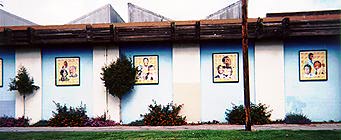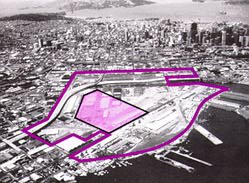The Real Bayview-Hunters Point: How city hall rips off Bayview-Hunters Point
But Bayview-Hunters Point is a lot more than beautiful views. Because of the efforts of Espanola and other long-time residents, Bayview has its own college campus and its own medical clinic.
These services were hard-won. The college took 12 years of lobbying. The clinic was built by the community with federal funds, but it is a constant struggle to get the city to do its share by making adequate staff available.
The clinic is cheerfully designed, well-run, and ready to grow to meet the needs of a large population that is located far from the city’s hospitals. Before the clinic, it took three bus changes to get to the nearest hospital, San Francisco General. Unfortunately, emergency services are on hold because the city will not station an EMS unit at the clinic and other resources like a four-station dental clinic are only used part-time because of a lack of staff.

Though the city gladly collects taxes in this neighborhood, it shows a definite reluctance to send any of the money back. The clinic is only one example.
Recently, an important community recreation center, a swimming pool, was allowed to run down to the point that it had to be closed. Rather than repair it, it’s been closed permanently. A few weeks before the stadium election, flyers were circulated offering a free summer athletic program to the neighborhood’s children to make up for the loss. A week after the election, the program was canceled without explanation.

Besides receiving a disproportionately low share of the city’s tax revenue, Bayview-Hunters Point shoulders a disproportionately high level of the city’s environmental problems. A PG&E power plant, the Hunters Point Naval Shipyard, an overburdened city sewage plant, and numerous industrial sites contribute to a variety of health problems.
Bayview/Hunters Point’s real problem
Rates of hospitalization for asthma, heart failure, diabetes, hypertension, and various forms of cancer are higher in Bayview-Hunters Point than in any other part of the city. Strangely, a formal report on this, which was issued to the media on May 17, 1997, somehow did not manage to make its way to the pages of the local newspapers until one week after the June 3rd stadium vote.
Instead of addressing the district’s environmental problems, poorly conceived development plans in other parts of the city threaten to cause further distress. For example, the city sewage plant located in the neighborhood is already overtaxed and often leaks raw sewage into the streets. The coming new Giant stadium, the 49er “mall/entertainment center,” expansion of Executive Park, development of the shipyard area, and the Mission Bay project will only make matters worse.



